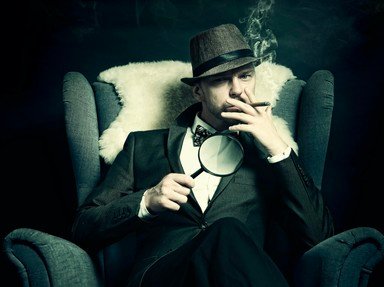Quiz Answer Key and Fun Facts
1. The Good: Finding heroin stashed in car, chasing elevated train
The Bad: Shooting an innocent cop
By the end of which Oscar-winning film do two NYPD detectives find themselves in a moral gray area?
2. The Good: Agreeing to set up perimeter after watching Steve Rogers beat up some Chitauri
The Bad: Refusing to set up perimeter until after Steve Rogers beats up some Chitauri
In which popular action blockbuster do the cops interfere with an alien invasion?
3. The Good: Cracking down on the Five Families after an assassination in a restaurant with a planted gun
The Bad: Removing guards from a hospital room, breaking an ex-Marine's jaw, getting paid off by the Mob
Police Commissioner McCluskey brings the unit dishonor in which classic film?
4. The Good: Arresting the Sticky Bandits
The Bad: But only after they've been covered in birdseed by a crazy pigeon lady
In which sequel do the police officers finally come in to save the day?
5. The Good: Not killing mentally-deranged protagonist after watching him mime shooting himself with a bloody finger in a brothel
The Bad: Not killing mentally-deranged protagonist after watching him mime shooting himself with a bloody finger in a brothel
The Secret Service and NYPD prevent the delusional protagonist of what film from shooting a politician?
6. The Good: Bridging cultural divides at a dance
The Bad: Failing to stop a rumble, believing everything they read in the papers about cruddy JDs, not dealing with Riff's social disease
The Jets sing "Gee, Officer Krupke", mocking a hardworking member of the NYPD, in what musical?
7. The Good: Uncovering massive corruption scandal in the NYPD
The Bad: There was a massive corruption scandal in the NYPD
An undercover cop investigates crooked behavior in the New York police department in what movie starring Al Pacino?
8. The Good: Trying to stop a riot at a pizzeria
The Bad: Killing an innocent boombox enthusiast
The New York police serve as antagonists in what 1989 film?
9. The Good: Accidentally capturing a real-life bank robber
The Bad: Kidnapping a 12-year-old girl and holding her hostage
An ESU team of the NYPD negotiates with a "cleaner" over the life of his adopted "daughter" in which of these films?
10. The Good: Pushing a German terrorist off a tower, rescuing a building full of hostages, completely showing up the LAPD
The Bad: Most of the sequels
A New York city cop takes care of some baddies near Christmastime in what action flick?
Source: Author
adams627
This quiz was reviewed by FunTrivia editor
jmorrow before going online.
Any errors found in FunTrivia content are routinely corrected through our feedback system.

